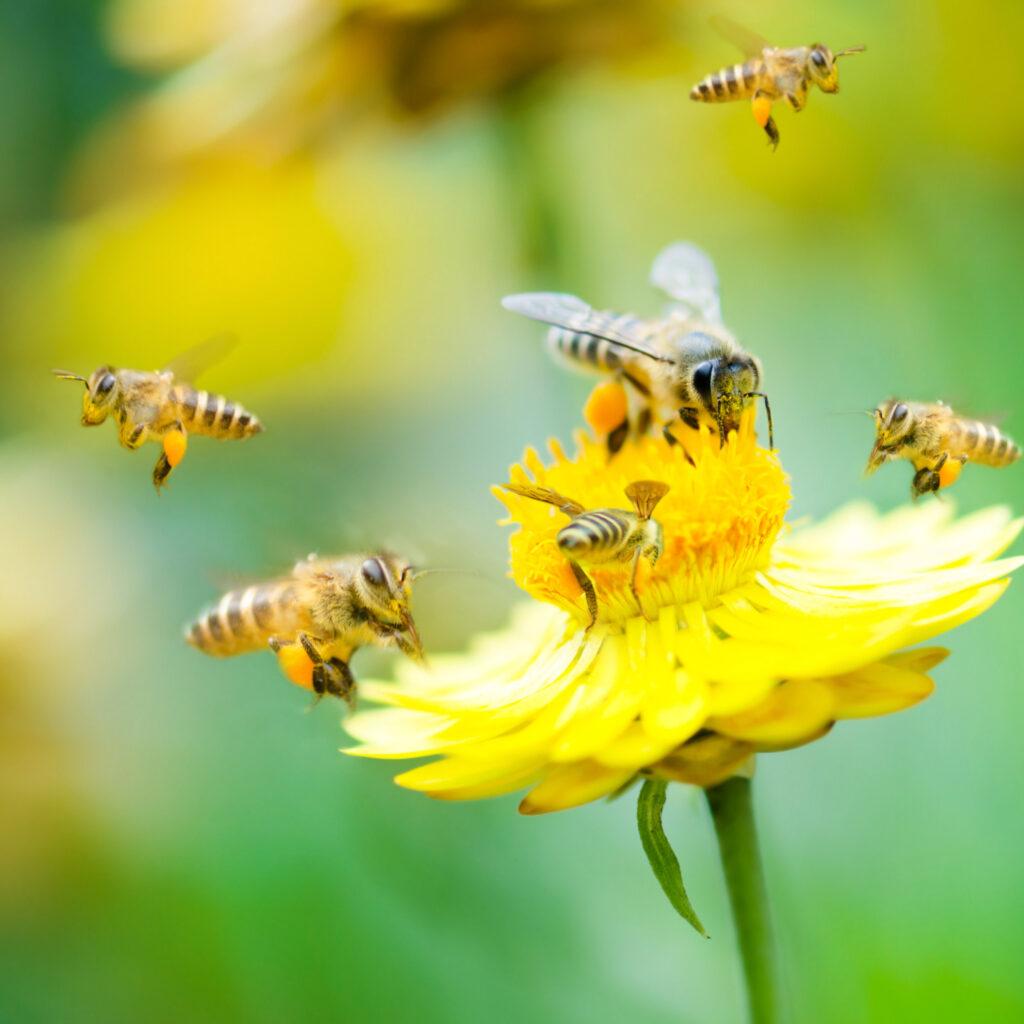The role of bees is fundamental for humans, for food production and for the environment itself. What can we do to protect them and support the ecosystem and why are bees so important?
The bees work for the 70% of the pollinations of the plant species present on the planet. A third of ours food it is due thanks to their pollination. In Europe, for example, it is estimated that the production of over 4,000 types of vegetables depends on them.
There are many cultivated plants that need bees:
- Plants from fruit such as apple, pear, plum, cherry, apricot, almond, peach, persimmon, chestnut, raspberry, strawberry, blueberry, blackberry;
- Plants horticultural such as cabbage, turnip, onion, garlic, bell pepper, melon, watermelon, cucumber, squash and eggplant;
- Plants forage from seed such as alfalfa, clover, broad bean, sainfoin, sulla, sweet clover, rapeseed, rapeseed, sunflower, buckwheat and flax.
Pollination is mainly the work of the honeybee thanks to some of its particular characteristics. For example, the fluff of the body which facilitates the adhesion of pollen grains. Then, thehigh number of flowers which are visited in one day since these bees are tireless flyers. And finally, theirs extreme loyalty to a species or plant. In fact, once the bee has found its source of nectar, it continues to visit that plant from the beginning to the end of its flowering and as long as there is nectar.
But a peculiarity of the pollinating bee is its great ability to call her friends towards a certain species or plant in a very unique way, by dancing!
The dance of the bees
Bees can perform two types of dances to communicate to other bees the presence of plants or flowers to pollinate. The first is one circular dance which serves to indicate that, within 50 meters of the hive, there is a source of food. But some bees are able to indicate much more distant sources of nourishment to their colony mates using the eight dance also called tail wagging dance. This type of movement allows the bees to surprisingly increase the information they send to the others, up to communicating the nature, position and degree of interest in that particular plant or species.
SOS bee
Today we are witnessing a decrease in bees in many natural environments. There are many reasons: climate change and pollution of the earth but also loss of habitat, monocultures, parasites and a considerable decrease in beekeepers and this noble profession. Furthermore, i pesticides they are among the greatest risks for pollinators, so much so that eliminating the most dangerous chemical substances for bees is the first step to take to protect them.
What can we do to protect bees
Have it on the balcony or in the garden (making it a real garden bee friendly) plants that can be a source of nourishment for bees is a small gesture that everyone can do. The most suitable choice is linked to local plants that respect the bees' habitat such as aromatic plants or sunflowers, lavender or mallow. Flowering sage and rosemary are ideal in Italy.
In agriculture, above all, to encourage bee nesting, it is necessary to maintain areas of unworked land. At the same time it is important to pay attention to the possible presence of their nests and protect them from destruction. In fact, their nests in the ground are often eliminated because they are confused with wasp nests or considered dangerous when in reality they are not at all.
Other things you can do: avoid the use of insecticides harmful and leave bowls of water that allow them to drink. Well yes! bees drink too!
What lifestyle
Bees are also social insects that form colonies. The family is divided into castes with certain hierarchies and roles that change in the various phases of their short existence. These animals are hard workers from the first day of their life. A family has a number ranging from 50,000 to 80,000 individuals.
They have a very active lifestyle. They live in colonies inside hives. They are organized in a hierarchical way: the queen, the only fertile female, the workers and the males, called drones. They have a surprising flexibility of behavior, they are able to recognize human faces, solve problems in the mazes, learn from everything around them until they adapt quickly and precisely to their task. They are an example of beauty and perfection and are fundamental to our survival!
–
Do you want more information or curiosities about the world of bees? Read other articles of ours BeeBlog

